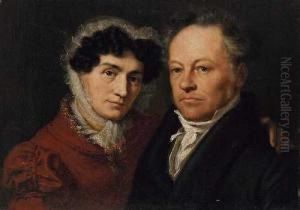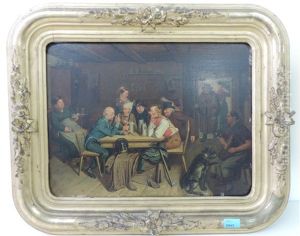Friedrich Moosbrugger Paintings
Friedrich Moosbrugger was a notable Austrian painter and lithographer, born in 1807 in Au in the Bregenzerwald, a region in Vorarlberg, Austria. He was part of the Moosbrugger family, which included several artists and architects, indicating a rich familial artistic heritage that influenced his career. Friedrich's work is often characterized by its detailed and delicate portrayal of religious themes, portraits, and landscapes, reflecting the Romantic period's stylistic tendencies prevalent during his lifetime.
Moosbrugger's early life was marked by his apprenticeship and studies under various artists, which helped him develop a distinct style that combined technical precision with a keen observation of nature and human expressions. He traveled extensively throughout Europe, including Italy, where he was particularly inspired by the Renaissance masters. These experiences enriched his artistic vocabulary, allowing him to infuse his works with a blend of classical beauty and romantic sensibility.
Throughout his career, Friedrich Moosbrugger engaged with various art forms, including painting, lithography, and drawing. His lithographs, in particular, gained him recognition for their intricacy and innovative use of the medium. Moosbrugger's religious paintings, often created for churches and private devotional spaces, are celebrated for their spiritual depth and emotional resonance. His portraits reveal a deep understanding of character and psychology, capturing the essence of his subjects with sensitivity and insight.
Despite his contributions to the art world, Friedrich Moosbrugger remained relatively lesser-known outside of Austria and art historical circles. His death in 1868 marked the end of a career that, while not widely celebrated internationally, significantly impacted the Austrian art scene of the 19th century. Today, his works can be found in museums, galleries, and private collections, where they continue to be appreciated for their beauty, technical skill, and emotional depth.


